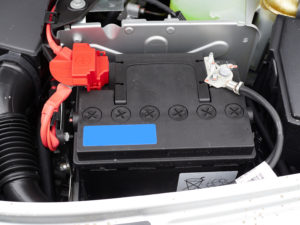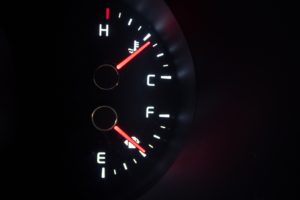
Most people think of a car battery only as the thing that starts their vehicle. Of course, the battery’s main purpose is to reliably start the vehicle under a variety of operating conditions, but a car battery does much more than that. Let’s take a closer look.
- Preserving the life of the alternator: The battery must be able to accept a charge from the alternator. In other words, the battery must be able to “recover” its voltage (usually around 12.6 volts) after the engine starts. If there’s a problem with the battery’s chemistry or its internal components, it may not be able to accept a charge from the alternator. This reduces voltage recovery and limits the battery’s ability to start the car. However, a battery’s ability to accept a charge from the alternator also affects the health and functioning of the alternator itself. If the internal resistance of the battery changes too much, it can cause the alternator to work too hard, thus reducing its overall life expectancy.
- Filling in for the alternator: The battery must provide power when the alternator isn’t the main source of energy. When the engine is running, the alternator is the electrical supply source for the vehicle. When the engine isn’t running, however, the battery itself must serve as the main power source. This is why sitting in your car for too long while running the lights or the radio—even with the engine off— can kill your battery.
- Data preservation: When the vehicle is not running, the battery supplies current to the microprocessors (or computer modules) that are constantly working behind the scenes. These microprocessors gather data that supports computer memory for the engine and transmission control modules, among other things. All of this data—including data for less important functions like radio presets and seat position memory—can be lost in the event of a main power failure, and the battery helps to prevent this.
- Electrical equilibrium: The battery acts as a kind of electrical filter, helping to manage amperage levels that can range from milliamps to brief spikes of hundreds of amps. In addition, voltage spikes can occur when certain components cycle on and off, so the battery must help absorb these spikes to prevent both damage to, and interference with, vital electrical components.
- Guiding the charging system: In newer vehicles, the alternator output is usually controlled by the power-train or engine control module. The module in charge of regulating or controlling charging voltage uses data gathered from the battery and other sensors to strategically adjust charging voltage. This helps to prevent over- or under-charging, and increases fuel economy by reducing the alternator duty cycle when the electrical demand is lower.
- Acting as a supplemental power source: The alternator can become overwhelmed when electrical demand surpasses the alternator’s electrical output capacity, usually due to simultaneous use of multiple high-current consumers.
For example, if you’re driving in snowy conditions, you might be using your fog lights, rear defroster, blower motor, and windshield wipers at the same time, all while running the vehicle at lower speeds, which can put major stress on the alternator. Installation of high-current consuming aftermarket audio equipment—such as amplifiers and subwoofers—can cause similar problems.
In these situations, the battery must be recruited as an extra power source. Even then, both the life of the battery and the alternator can be significantly shortened if the vehicle operates under these conditions for extended periods.
As you can see, the humble battery is more than just a glorified “on” switch; it plays a central role in many aspects of a vehicle’s intricate electrical system. Having your battery (and alternator) checked regularly, and being mindful of how you are using them, can help prevent larger issues in the future. Thinking it might be time to give your battery a checkup? Contact us today to schedule your inspection.





